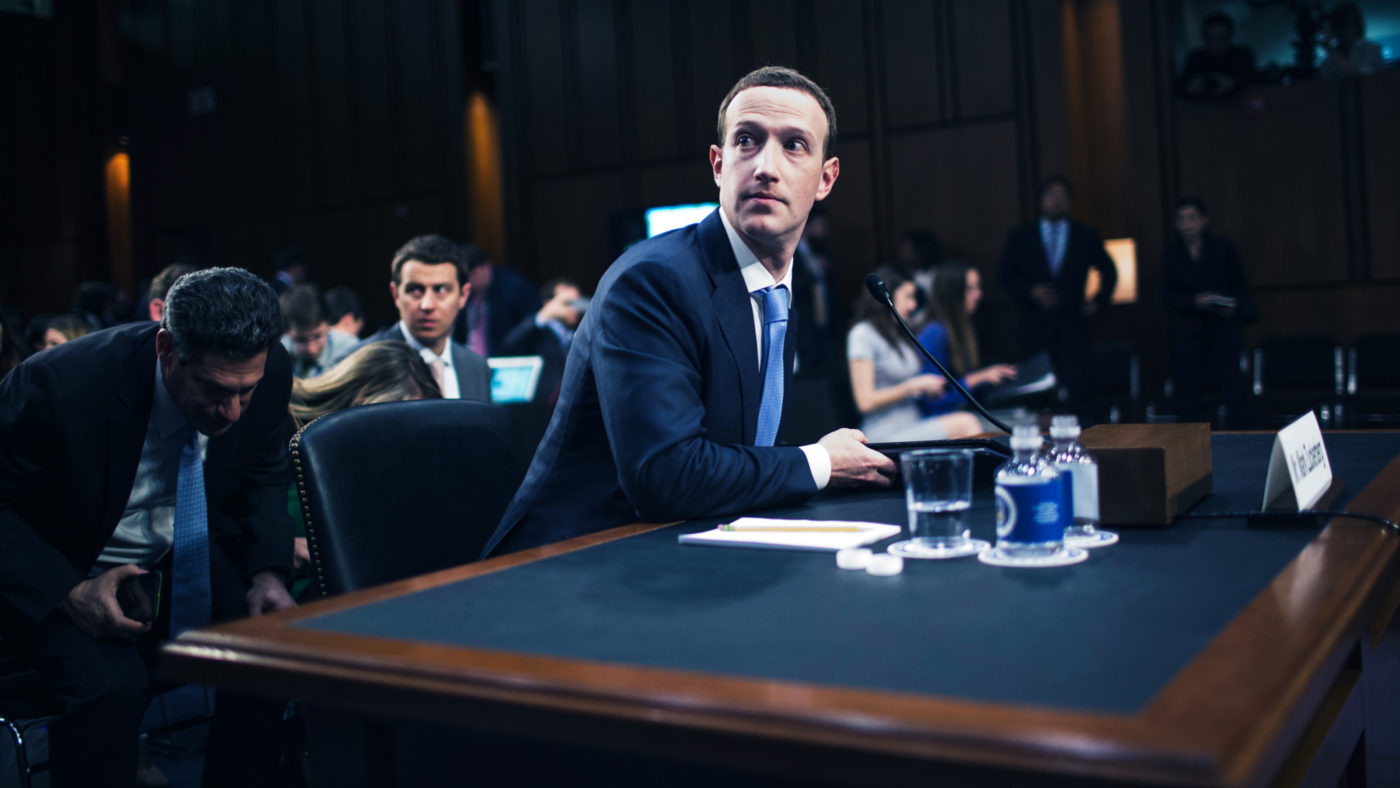For the past two years, politicians and journalists have become obsessed with fake news. It’s been blamed for the shock election of Trump and Britain’s vote to leave the EU. The Pope’s compared it to the snake in the Garden of Eden and the House of Commons decided it was important enough to fly the DCMS Select Committee over to DC to grill Facebook and Google execs. Even Mark Zuckerberg admitted that not addressing it sooner was “a big mistake”. His punishment is, as Reason magazine’s Robby Soave puts it, to live out “every young person’s worst nightmare: trying to explain how tech stuff works to the nation’s elderly.”
Following the news cycle, it’s easy to come away with the same view as the ill-tempered Channel 4 News presenter Jon Snow, that Facebook has a “dark, cancerous side” that presents “a vast threat to democracy”. I’m sceptical. Fake news has all the signs of being a moral panic rather than a real problem.
First, fake news is too useful a narrative. Rather than face hard questions about candidate choice, voter disenchantment and campaign tactics, unsuccessful campaigns can blame social media for spreading misleading news stories. It’s useful for the New York Times to shift the focus on to fake stories about the Pope endorsing the Donald and away from their reporting of Hillary Clinton’s emails.
And it’s useful as well for the other legacy media companies who compete with Facebook, Google and Twitter for ad revenue. It is ironic that Peter Thiel, Facebook’s earliest outside investor, was inspired to invest in Facebook by the theories of french social theorist Rene Girard when Facebook itself has become one of the scapegoats that were the focus of Girard’s thinking.
Second, before the fake news panic, people were worried the idea of filter bubbles. Online algorithms, the argument ran, would mean we only end up seeing information we already agree with and push us towards increasingly extreme and polarised views. It’s easy to see how this leads to fake news. Increasingly polarised readers end up looking for and sharing more and more extreme articles until eventually they’re pushed toward fringe or even fake websites.
But there’s strong demographic evidence that this isn’t happening. If it were the case that filter bubbles were pushing people towards increasingly polarised views, then we would expect young people (the biggest users of social media) to be the most polarised. In fact, the opposite is the case. A study from Stanford and Brown University found that over-75s rather under-40s became polarised at the fastest rate.
Another study pushes back against the idea that social media is creating echo chambers. It found that the “vast majority of online news consumption is accounted for by individuals simply visiting the home pages of their favourite, typically mainstream, news outlets”. In other words, plus ça change. More interestingly, by looking at the browsing habits of 50,000 US users, they discovered that search engines and social media in fact increase “an individual’s exposure to material from his or her less preferred side of the political spectrum”.
Third, it’s not even clear that fake news left a lasting impression on voters. While one study suggests a small fraction of ex-Obama voters believed fake stories such as “Clinton was in ‘very poor health’ due to a serious illness” (12 per cent), “Pope Francis endorsed Trump” (eight per cent), “Clinton approved weapons sales to Islamic jihadists, including ISIS” (20 per cent), they didn’t account for what blogger Scott Alexander dubbed the “Lizardman Constant”. That refers to a poll that found four per cent of Americans believe lizardmen are running the world (an additional seven per cent were not sure). Another poll found that four per cent of Americans believe they have been decapitated.
More accurate studies account for this by comparing real fake news with faked fake news. Researchers from Stanford and New York University found that 15 per cent of Americans recalled seeing fake news (and half believed), roughly the same number also recalled seeing fake news that was so fake that it never even made it to their newsfeed. Taking that into account, the researchers estimated that only 1.2 per cent of Americans had actually seen and believed fake news. Now that’s enough to swing an election, but there’s an important caveat. Fake news is only believable when fits with a reader’s worldview. Many Trump supporters likely believed that the Pope endorsed Trump and that Hillary was involved in a paedophile ring pizza parlour, but I doubt anyone who was seriously considering voting the other way did.
The authors concluded that for fake news to have changed the outcome of the election “a single fake article would need to have had the same persuasive effect as 36 television campaign ads”. That’s unlikely.
But while fake news isn’t a real problem, the response to this moral panic is. Most of the questions Zuckerberg faced yesterday were inane (“Quite a story – dorm room to global behemoth. Only in America, right? Not in China, right?”), ill-informed (as one Senator put it, “When I’m emailing on WhatsApp”) or irrelevant (Ted Cruz rattling on about the firing of his friend (and donor) Palmer Luckey).
But Senator Ben Sasse raised an important point. If there is an increasing pressure on Facebook to take down and censor more content, this could lead to Facebook over-censoring and removing offensive, but legal, speech, depriving adults of a platform for “vigorous debate”. We have already seen anti-sex trafficking law SESTA-FOSTA lead to website take down sex worker discussion boards.
Real news could end up as collateral damage in the fake news panic.


